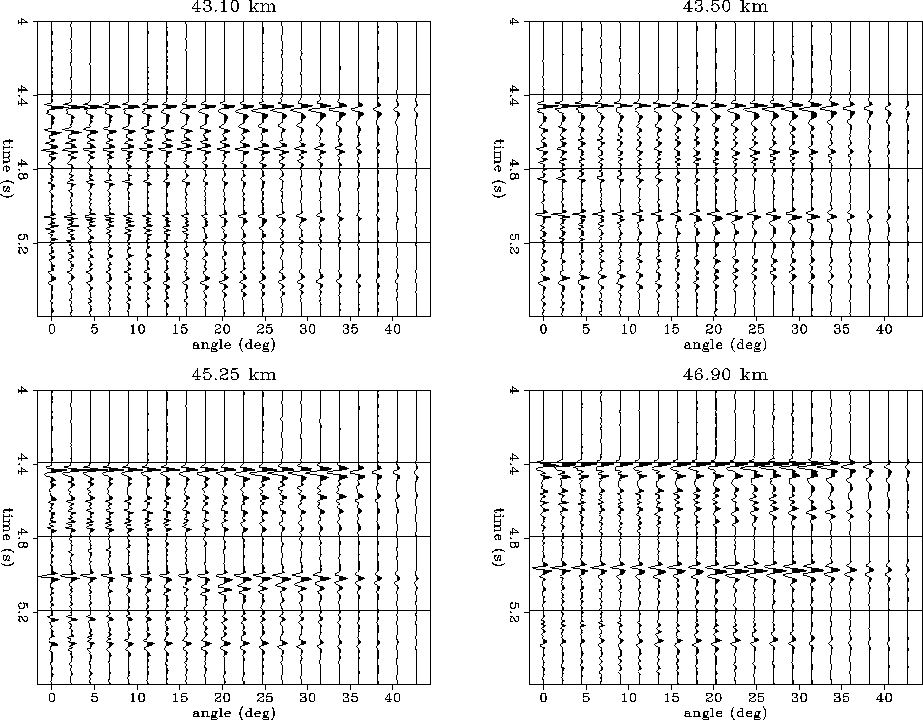




Next: Conclusions
Up: Sava & Fomel: Angle-gathers
Previous: Examples
Several key points highlight the strengths of our method of computing angle-domain common-image gathers:
- Our method produces the output in the reflection angle at the reflector, and not in the offset ray-parameter. This makes the results more open to interpretation, and potentially allows for consistent quantitative AVA analysis.
- Our method generates angle gathers after and not during migration, thus enabling us to shuttle between the angle and offset domains without re-migrating the data. In addition, the method is much easier to code, and therefore potentially more robust.
- Our method enables inexpensive regularization of the angle-domain, leading to gathers with events that vary smoothly along the angle axis. The increased S/N ratio helps reveal weak events that would otherwise be impossible to find.
- If used in conjunction with prestack Stolt residual migration, the cost of our method becomes trivial, since the images are already transformed to the Fourier-domain. Also, returning to the space-domain after our transformation is less costly, since we reduce the need for a 3-D Fourier transform at every midpoint to that of a 1-D Fourier transform.
hydrreal.ava
Figure 8 AVA analysis panels for the hydrates
data. The BSR (located around 4.4 s) clearly shows consistent
increase of the amplitude with angle and confirms previously
reported results. Each panel is labeled with the horizontal
coordinate of the image-gather.










Next: Conclusions
Up: Sava & Fomel: Angle-gathers
Previous: Examples
Stanford Exploration Project
4/27/2000
